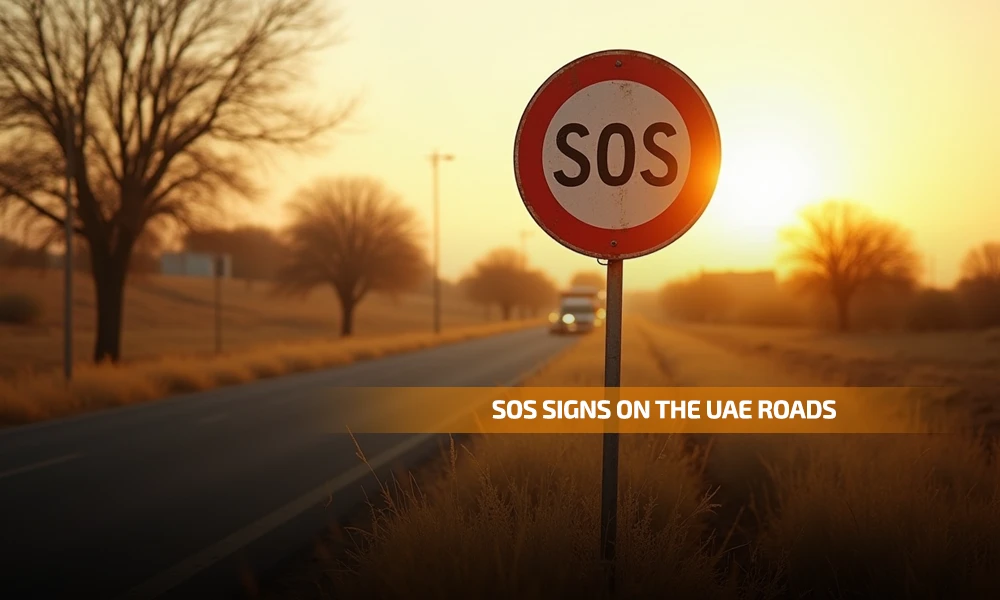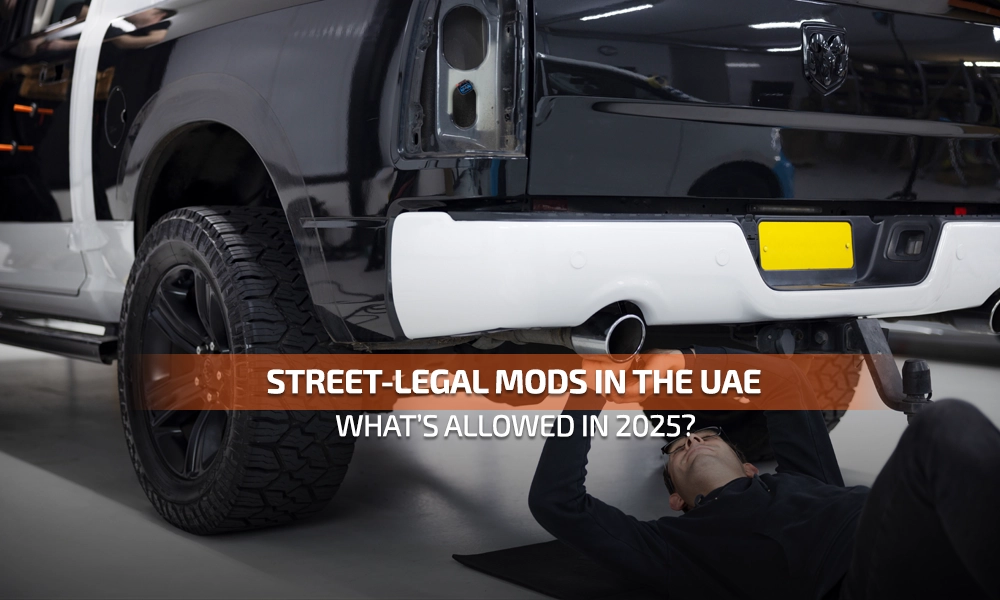Understanding the Warnings That Could Save Lives
Driving on UAE roads is a blend of luxury, speed, and high-tech infrastructure. But amidst the glitz and smooth asphalt, SOS signs and warning indicators play a crucial role in maintaining road safety. Whether you’re cruising down Sheikh Zayed Road or navigating through a desert highway, understanding these emergency signs isn’t just about compliance—it’s about survival.
This comprehensive guide explains the most vital road signs UAE drivers should never ignore, especially the ones that serve as urgent distress signals. We’ll also explore how dubai traffic signals are part of a larger safety ecosystem, helping drivers act swiftly in emergencies.
What Are SOS Signs and Why Are They Important?
SOS signs are emergency or warning signs placed along highways and roads to alert drivers of imminent dangers, hazards, or required action. These signs may indicate:
- Dangerous curves
- Sharp inclines or declines
- Road closures or detours
- Vehicle breakdown zones
- Emergency escape lanes
In a country like the UAE, where road speeds are high and weather conditions (like sandstorms) can change suddenly, these signs are a vital safety net.
According to the UAE Road Sign system, there are over 500 types of traffic signs, categorized into regulatory, warning, and guidance signs. Among them, SOS signs from a specific subset designed to help drivers respond to emergencies quickly.
Types of SOS and Emergency Road Signs in the UAE
Let’s explore the key SOS signs and what they mean for drivers across the Emirates:
Emergency U-Turn Signs
These signs allow drivers to make a U-turn in case of emergency—particularly on highways where standard U-turns are prohibited. Misusing these can result in heavy fines unless justified by a legitimate emergency.
Breakdown Lane Indicator
A thin solid line or a designated roadside area marked for vehicle breakdowns. These are often equipped with SOS phones or emergency response location markers.
Danger Ahead Signs
Usually triangular and red-bordered, these signs warn of potential hazards such as rock falls, sharp bends, or slippery roads. They are especially critical in mountainous areas or after sandstorms.
Emergency Phone Area
Marked with a blue sign featuring a telephone icon, these are placed every few kilometers along major highways. Drivers can use these phones to contact authorities or emergency services.
Firefighting Equipment Ahead
These signs indicate the availability of fire extinguishers or emergency firefighting points—often seen in tunnel routes like the Al Shindagha Tunnel in Dubai.
Emergency Road Closures
Often seen on electronic display boards or with temporary signage during accidents, flash floods, or sandstorm alerts.
Understanding Dubai Traffic Signals in Emergencies
While road signs UAE play a critical role in static communication, dubai traffic signals are part of a dynamic, smart traffic management system. During emergencies:
- Traffic signals may flash yellow to indicate caution.
- Special lanes (like the bus/taxi lanes) may temporarily be opened to general traffic for evacuation or diversions.
- Intelligent sensors adjust traffic signal timing to reduce congestion and facilitate emergency vehicle access.
The Dubai RTA has integrated smart systems that adapt in real-time based on road conditions, accidents, or weather disruptions. Staying aware of these signal changes is as important as recognizing physical road signs.
Common Mistakes Drivers Make with SOS Signs
Many drivers overlook or misinterpret these vital signs, leading to serious risks. Common mistakes include:
- Ignoring danger ahead signs assuming the warning is outdated.
- Stopping in unauthorized areas during breakdowns.
- Failing to use emergency lanes correctly.
- Driving into flooded roads despite road closure warnings.
Ignoring these warnings could mean the difference between life and death—both for you and other road users.
Also read: Signs Your Car Needs Immediate Repair – Don’t Ignore These Warning Lights to understand vehicle-based SOS alerts that often work in tandem with road-based emergency signs.
How to Respond When You See an SOS Sign
Here are some general tips:
Stay Calm and Alert
If you see a red or yellow warning sign, slow down and assess the situation immediately. Don’t wait until the hazard is visible.
Pull Over Properly
Use the designated breakdown lanes or emergency parking bays only. Use hazard lights and place your triangle reflector at least 50 meters behind your car.
Use Emergency Phones or RTA Apps
If you’re on a major highway, look for the emergency phone sign. Alternatively, use the RTA Smart Drive or Abu Dhabi Police app to request roadside assistance.
Report Unclear Signs
If an SOS sign is damaged or unreadable, report it using the “Dubai Now” app or by calling the RTA customer support line.
The Role of Smart Technology in Road Safety
UAE is moving toward a smarter, AI-powered transport future. Here’s how:
- Smart SOS Beacons: Placed at high-risk zones to notify control rooms instantly.
- AI Traffic Monitoring: Adjusts dubai traffic signals in real-time for quicker emergency responses.
- Connected Cars: Newer vehicles in the UAE come with SOS buttons that link to emergency services.
These advancements work alongside road signs UAE to create a seamless safety net for all drivers.
Legal Penalties for Ignoring SOS Signs
The UAE traffic law is strict when it comes to road safety violations. Here are possible consequences:
| Violation | Penalty |
| Ignoring emergency lane | AED 1,000 + 6 black points |
| Misusing SOS U-turn | AED 500 |
| Blocking emergency phone access | AED 1,000 |
| Disregarding hazard sign warnings | Up to AED 2,000 |
Authorities also have the right to impound vehicles or suspend driving licenses for repeated offenses.
Emergency Signs in Desert and Off-Road Areas
If you’re venturing into the desert or remote areas, you may come across less-common SOS signs, such as:
- Camel Crossing Warning
- Soft Sand Ahead
- No Rescue Services Beyond This Point
- Low Visibility Area
These signs are vital due to the unpredictable nature of desert terrains, especially during the summer or sandstorm season.
How to Stay Updated About Traffic and SOS Alerts
- Download the Dubai Drive, Abu Dhabi Police, and RTA Smart App for real-time alerts.
- Follow official Twitter handles like @rta_dubai or @ADPoliceHQ.
- Listen to Dubai Eye or Abu Dhabi Radio for live traffic updates.
Keeping your route updated helps you avoid emergency zones or detours before hitting the road.
FAQs – SOS Signs on the UAE Roads
1. What are SOS signs on UAE roads?
They are emergency road signs warning of hazards like breakdown zones, danger areas, or escape lanes.
2. Why are SOS signs important?
They help prevent accidents and guide drivers safely during emergencies.
3. Are SOS signs different from regular road signs in the UAE?
Yes, SOS signs are specifically for emergency guidance and hazard alerts.
4. Where can I find emergency phones on highways?
Look for the blue SOS phone sign placed every few kilometers.
5. Can I use emergency U-turns anytime?
No, only during genuine emergencies—misuse can lead to fines.
6. How do Dubai traffic signals help during emergencies?
They adapt in real time to reroute traffic and give priority to emergency vehicles.
7. What should I do if my car breaks down on the highway?
Move to the emergency lane, use hazard lights, and call for help via SOS phones or RTA app.
8. Are there penalties for ignoring SOS signs?
Yes, fines up to AED 2,000 and black points may apply.
9. What do I do if an SOS sign is unclear or damaged?
Report it via the RTA app or Dubai Now app.
10. How can I stay informed about road alerts?
Use RTA Smart Drive, follow traffic updates, and monitor dubai traffic signals in real-time.
Conclusion: Read the Signs, Save Lives
The UAE has built a remarkable driving environment, but it’s up to us to interpret and act on SOS signs correctly. Whether it’s a flashing light, a red triangle, or smart dubai traffic signals, these are not suggestions—they’re lifelines.
Staying alert to road signs UAE doesn’t just make you a responsible driver; it makes you part of a larger safety culture.
So next time you’re on the road, watch the signs—they may be trying to save your life.







